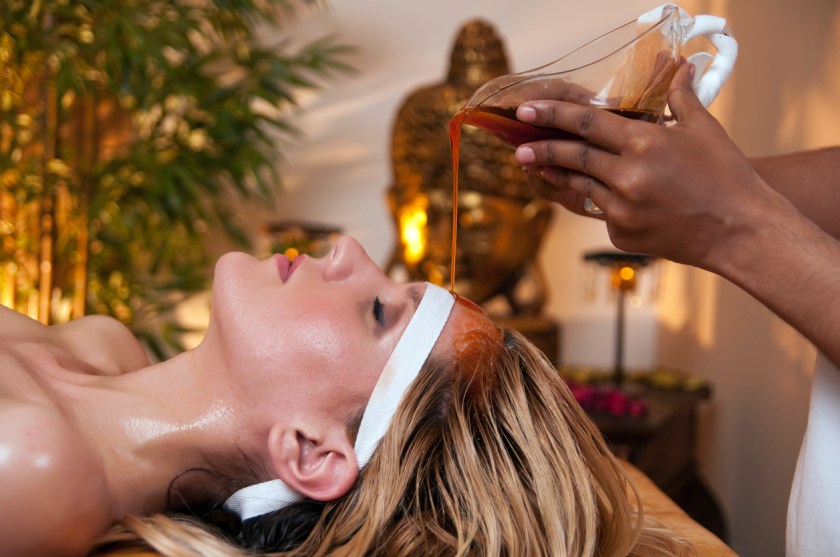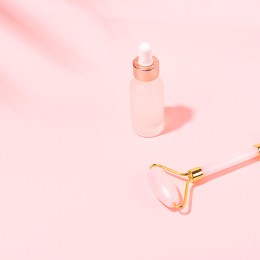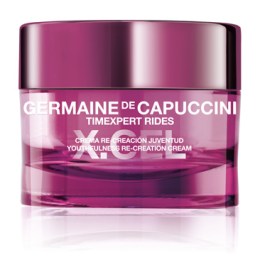By Yasmin Sadikot*
Ayurveda means “science of longevity”.
It’s indigenous to India and the oldest recorded system of healing and wellness, introduced by the Rishis over 5000 years ago. It comprises internal herbal medicine, psychology, nutrition, yoga and external medicine. It stands to reason that using medicinal herbs is an excellent way to repair the skin and hair (scalp) to help maintain their health and beauty, with therapies to variously detoxify, rejuvenate and improve tone.
Medicinal herbs for the skin have been around for thousands of years. In our modern times, we can still take advantage of these ancient Ayurvedic remedies and solutions. Treatments utilise specific combinations of herbs (not a singular herb) to achieve balance. Our three-fold nature is made up of the soul, the mind and the body. We are a microcosm of the totality – macrocosm – our bodies a temple of light.
Without doubt the mind, body and spirit are connected. Disconnection occurs when the treadmill of life takes over and exhibits itself in mental and physical issues. Therefore, Ayurvedic treatments need to incorporate techniques that encourage the natural flow of life – firstly help relax the body, the mind then follows. The healing properties of herbs are incorporated into treatments and products; the combination of which helps the transcendence from stress to relaxation and a visible improvement to the physical body: ie, face, body and/or hair.
One of the chief reasons that Ayurvedic products and treatments have taken the spa and beauty worlds by storm is the availability of numerous potent skin rasayanas (rasa = essence, ayana = enter) in the Ayurvedic herbal treasury. Skin rasayanas are so called because of their ability to deliver penetrating holistic benefits to the skin without side effects. Whatever the skin type or specific needs for balance, there are Ayurvedic skin rasayanas that can help.
Further, when used in combination, as is the Ayurvedic tradition, we derive the added benefit of synergy, with a combined herbal formulation being exponentially more beneficial than any single herb in the formulation. These rasayanas can be used either as nutritional supplements, to provide support to the skin from within, or in topical formulations for the skin where they deliver their benefits trans-dermally. The therapeutic value of the rasayanas is maximised when they are used in natural topical formulations in combination with organic milk or cream, yogurt or honey.
Exfoliating ingredients (or substances) such as natural clay, salts, grains or lentil flours, vegetable base oils act as the Yogavahi (the carrier of the healing values of the herbs) to the cells and tissues. Both the herbs themselves, as well as other ingredients such as yoghurt or honey, can be chosen specifically for a skin type, or balanced to suit all skin types. The herbs should always be fresh and mixed into a paste with natural oils such as sunflower, sesame and almond to ensure their efficacy or juices such as aloe vera or pure rose water.
THE DOSHAS
Ayurveda holds an elemental view of the universe and believes people are made up of various combinations of five elements: Air, Ether, Fire, Earth and Water. They form the three biological humours of Ayurveda called doshas: Vata, Pitta and Kapha.
VATA
Air and ether predominant The skin of Vata doshas is delicate and tends to be naturally dry. Skin Rasayanas that benefit Vatas are mainly warming and nourishing, with subsidiary benefits such as enhancing a natural glow, increasing circulation or purifying the skin. Nourishing and warming herbs are important if Vata skin is to look healthy, plump and youthful. Examples of Vata pacifying herbs that help support skin elasticity, moisture balance, texture and radiance are: Brahmi (bacopa), shatavari (Indian asparagus), amla (Indian gooseberry), gotu kola (Indian pennywort), ashwagandha (winter cherry).
PITTA
Fire and water dominant Pittas’ skin is sensitive and has a tendency towards being inflammatory. Skin rasayanas that support the health of Pittas are mainly cooling and soothing. Aggravated Pitta skin can look angry and display eruptions and redness. Pitta skin also requires protection, because often it very sensitive to the sun. Examples of Pitta pacifying herbs that are cooling and calming, and nourish and soothe sensitive skin tissues without irritation are: Amla, bhringaraj (Eclipta alba), kumari (aloe vera), white sandalwood, red sandalwood, vetiver. Helpful to purify and clarify skin without depleting it of moisture are: Triphala, manjistha (Indian Madder), neem.
KAPHA
Water and earth predominant Tends to be congested and susceptible to attracting dust and grime. Skin rasayanas for Kapha skin are therefore helpful to purify, detoxify, nourish and rejuvenate. Kapha balancing herbs that help detoxify and nourish simultaneously (Kapha skin needs to be kept clean and stimulated): Neem, manjistha (Indian Madder), triphala, tulsi (Holy basil), turmeric.
Herbal professional treatments and take-home products require time to show the full result, not unlike taking herbal supplements internally. The application of herbal creams, lotions, scrubs and oils are important for both professional use and take home. For the herbs to be effective they must be massaged firmly in an upward and circular motion into the skin not compressed.
*Yasmin is founder and formulator of Australia’s OmVeda Ayurvedic products and protocols. OmVeda signature techniques are based on traditional Ayurvedic methods refined for use in a modern day spa or wellness centre. Ingredients are sourced from India and the brand works with Ayurvedic doctors and cosmetologists in India. OMVEDA.COM.AU; 1 300 662 383




